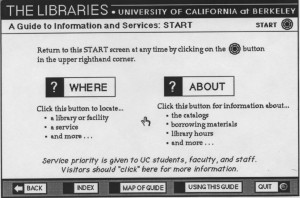 Perhaps you really had to be there to understand what I’m about to relate. I hope not, but it’s quite possible. Imagine a world without the Internet, as so totally strange as that is. Imagine that we had no world-wide graphical user interface to the world of information. Imagine that the most we had were green screens and text-based interfaces to “bulletin boards” and “Usenet usegroups”. Imagine that we were so utterly ignorant of the world we would very soon inhabit. Imagine that we were about to have our minds utterly blown.
Perhaps you really had to be there to understand what I’m about to relate. I hope not, but it’s quite possible. Imagine a world without the Internet, as so totally strange as that is. Imagine that we had no world-wide graphical user interface to the world of information. Imagine that the most we had were green screens and text-based interfaces to “bulletin boards” and “Usenet usegroups”. Imagine that we were so utterly ignorant of the world we would very soon inhabit. Imagine that we were about to have our minds utterly blown.
But we didn’t know that. We only had what we had, and it wasn’t much. We had microcomputers of various kinds, and the clunkiest interfaces to the Internet that you can possibly imagine. Or maybe you can’t even imagine. I’m not sure I could, from this perspective. Take it from me — it totally sucked. But it was also the best that we had ever had.
And then along came HyperCard.
HyperCard was a software program that ran on the Apple Macintosh computer. It would be easy to write it off as being too narrow a niche, as Microsoft was even more dominant in terms of its operating system than it is now. But that would be a mistake. Much of the true innovation at that point was happening on the Macintosh. This was because it had blown the doors off the user interface and Microsoft was still playing catchup. You could argue in some ways it still is. But back then there was absolutely no question who was pushing the boundaries, and it wasn’t Redmond, WA, it was Cupertino, CA. Remember that I’m taking you back before the Web. All we had were clunky text-based interfaces. HyperCard gave us this:
- True “hypertext”. Hypertext is what we called the proto-web — that is, the idea of linking from one text document to another before Tim Berners-Lee created HTML.
- An easy to learn programming language. This is no small thing. Having an easy-to-learn scripting language put the ability to create highly engaging interactive interfaces into the hands of just about anyone.
- Graphical elements. Graphics, as we know, are a huge part of the Web. The Web didn’t really come into its own until graphics could show up in the UI. But we already had this in HyperCard. The difference was that anyone with a network connection could see your graphics — not just those who had your HyperCard “stack”.
As a techie, I was immediately taken with the possibilities, so as a librarian at UC Berkeley at the time I found some other willing colleagues and we built a guide to the UC Berkeley Libraries. Unfortunately I’ve been unable to locate a copy of it, since it’s still possible to run a HyperCard stack in emulation. I’d give a lot to be able to play with it again.
Doing this exposed us to principles of “chunking up” information and linking it together in different ways that we eventually took with us to the web. We also learned to limit the amount of text with online presentations, to enhance “scannability”. We were introduced to visual metaphors like buttons. We learned to use size to indicate priority. We experimented with bread crumb trails to give users a sense of where they were in the information space. And we strove to be consistent. All of these lessons helped us to be better designers of web sites, before the web even existed.
For more, here is another viewpoint on what HyperCard provided a web-hungry world.

